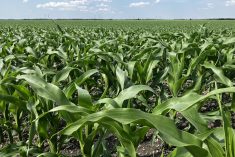Reuters — A storm front should bring moderate to abundant rainfall across most of Argentina’s key agricultural area over the next week, the Buenos Aires grains exchange said on Thursday, which could help farmers plant their fields after a historic drought.
Lack of rainfall in Argentina, the world’s largest exporter of soybean oil and meal and the third-largest exporter of corn, has slowed planting of its current soybean and corn crops and nearly halved the country’s wheat output.
According to the exchange, most of Argentina’s agricultural zone, as well as that of neighbouring Uruguay, should between Jan. 19 and Jan. 25 see “moderate to very abundant” rains of 10-75 millimetres.
Read Also

Brazil to reap record soy crop in 2025/2026, increase exports
Brazil’s Conab said the country will reap a record soybean crop of 177.6 million tons in the 2025/2026 harvest year, according to data released on Thursday.
Over the northwest of Argentina’s Salta province and most of nearby Jujuy, the exchange forecast severe storms bringing down than 150 mm of rain.
The centre-north of the region, however, spanning most of Paraguay and the Chaco region should receive little to no rain, it added, as hot tropical winds blow across this region as well as a large part of Argentina’s Pampas and eastern Uruguay.
On Wednesday, Argentina’s agriculture ministry predicted rains across the centre and north of the country from the second half of January, but said it was still to early to make estimates on future planting areas.
The ministry said it would need at least a month before it could perform an analysis.
— Reporting for Reuters by Sarah Morland.














